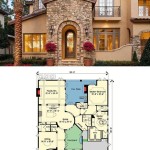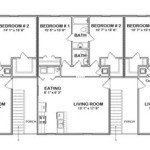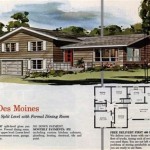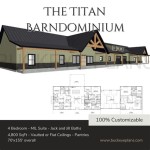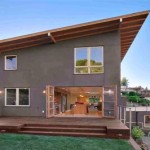House Plans For Narrow Lots With Garage: Optimizing Space and Functionality
Building a home on a narrow lot presents unique architectural challenges, particularly when incorporating a garage. The primary concern revolves around maximizing space utilization while ensuring functionality, aesthetic appeal, and adherence to local building codes. House plans designed for narrow lots with garages require careful consideration of layout, orientation, and structural design to create a comfortable and practical living environment.
The availability of various floor plans specifically tailored for narrow lots allows homeowners to select designs that align with their individual needs and preferences. These plans often feature innovative solutions for space optimization, such as vertical construction, strategic window placement for natural light, and efficient use of corners and hallways. The integration of a garage into these designs necessitates a thoughtful approach to ensure it complements the overall aesthetic and functionality of the house.
Key Considerations for Narrow Lot House Plans with Garages
Designing a house plan for a narrow lot with a garage requires addressing several critical factors. These factors influence the overall layout, structural integrity, and aesthetic appeal of the house. Careful consideration of these aspects during the initial planning stages can contribute to a successful and satisfying outcome.
First, local zoning regulations and building codes significantly impact what can be built on a narrow lot. Setback requirements, height restrictions, and allowed lot coverage dictate the permissible dimensions and placement of the house and garage. It is paramount to consult with local authorities and obtain necessary permits to ensure compliance with all applicable regulations before commencing construction.
Second, the orientation of the lot influences the placement of the garage and the house itself. The direction of sunlight, prevailing winds, and views should be considered to optimize energy efficiency and create a comfortable living environment. For example, positioning the garage on the side of the house that receives less sunlight can help reduce heat gain during the summer months. Similarly, orienting living spaces towards desirable views can enhance the overall enjoyment of the home.
Third, the size and type of garage needed should be determined. A single-car garage, a two-car garage, or a tandem garage (where vehicles are parked one behind the other) will each have different spatial requirements and impact the overall layout of the house. The garage's intended use, such as for parking, storage, or a workshop, should also be considered when determining its size and configuration.
Common Garage Placement Strategies for Narrow Lots
The placement of the garage in relation to the house is a crucial aspect of narrow lot design. Several common strategies exist, each with its own advantages and disadvantages. The optimal choice depends on the specific characteristics of the lot, the homeowner's preferences, and local building codes.
Front-Entry Garage: This configuration involves placing the garage at the front of the house, typically facing the street. While it offers convenient access, it can dominate the streetscape and reduce the curb appeal of the house. Front-entry garages are often integrated into the design with architectural details to minimize their visual impact, such as gables, decorative doors, and landscaping.
Side-Entry Garage: A side-entry garage is positioned on the side of the house, with the garage door facing the side property line. This configuration can improve curb appeal by minimizing the visual prominence of the garage. However, it requires sufficient space on the side of the house to accommodate the driveway and garage door swing. Side-entry garages can also be more challenging to integrate into the overall design, particularly on very narrow lots.
Rear-Entry Garage: In this configuration, the garage is located at the rear of the house, typically accessed through an alley or a long driveway along the side of the house. Rear-entry garages can significantly enhance curb appeal by completely concealing the garage from the street. They also offer more privacy and security. However, they require access to the rear of the lot, which may not be available in all situations. Additionally, long driveways can be costly to construct and maintain.
Tuck-Under Garage: A tuck-under garage is positioned beneath the main living area of the house, often at the basement level. This configuration is particularly suitable for sloped lots and can maximize space utilization on narrow lots. Tuck-under garages require careful structural engineering to ensure the stability of the house. They can also present challenges with accessibility, particularly for individuals with mobility limitations.
Maximizing Space and Functionality in Narrow Lot House Plans
Narrow lot house plans require innovative design solutions to maximize space and functionality. Efficient use of available square footage is paramount to creating a comfortable and practical living environment. Several strategies can be employed to achieve this goal.
Vertical Construction: Building upward rather than outward is a common strategy for maximizing space on narrow lots. Multi-story designs allow for more living space without increasing the footprint of the house. Careful planning is essential to ensure that the upper floors are accessible and functional, with considerations for stairs, elevators, and natural light.
Open Floor Plans: Open floor plans create a sense of spaciousness by eliminating walls between living areas such as the living room, dining room, and kitchen. This design approach allows for better flow of traffic and natural light throughout the house. Open floor plans can be particularly beneficial in narrow lot homes where space is limited.
Strategic Window Placement: Maximizing natural light is essential for creating a bright and airy living environment. Windows should be strategically placed to capture sunlight throughout the day. Skylights, dormer windows, and clerestory windows can be used to bring natural light into areas that may not have access to traditional windows. Natural light can visually expand the space of a room, making it feel larger than it is.
Efficient Storage Solutions: Incorporating built-in storage solutions is crucial for maximizing space and minimizing clutter. Built-in shelves, cabinets, and drawers can be integrated into walls and corners to provide ample storage without taking up valuable floor space. Under-stair storage, attic storage, and garage storage systems can also be used to maximize storage capacity.
Multi-Functional Spaces: Designing spaces that can serve multiple purposes can help maximize space utilization. For example, a guest room can also be used as a home office or a playroom. A dining room can be designed to double as a library or a study. Multi-functional spaces provide flexibility and adaptability to meet the changing needs of the homeowner.
Outdoor Living Spaces: Extending the living space outdoors can create a sense of spaciousness and provide additional areas for relaxation and entertainment. Decks, patios, and balconies can be designed to seamlessly integrate with the interior living spaces. Outdoor kitchens, dining areas, and seating areas can enhance the enjoyment of the outdoor environment.
Integrating a garage into a narrow lot house plan demands a comprehensive understanding of zoning regulations, spatial limitations, and design strategies. By carefully considering the orientation of the lot, the placement of the garage, and the efficient use of space, a functional and aesthetically pleasing home can be created. The key is to balance practicality with architectural appeal, ensuring that the resulting design meets the needs of the homeowner while maximizing the potential of the narrow lot.

20 Luxury Narrow House Plans With Front Garage Images Small Traditional Plan

Simple Narrow Lot House Plans Houseplans Blog Com

Morning Star Farm House Plan Narrow Archival Designs

Narrow House Plans For Lots Homes By Mark Stewart Home Design

House Plan 82250 Narrow Lot Style With 1588 Sq Ft 3 Bed Bat

Narrow House Plans Lot Ranch Style

Budget Friendly Narrow Lot House Plan

2 Story House Plans For Narrow Lots Blog Builderhouseplans Com

Simple Narrow Lot House Plans Houseplans Blog Com

Plan 056h 0005 The House

